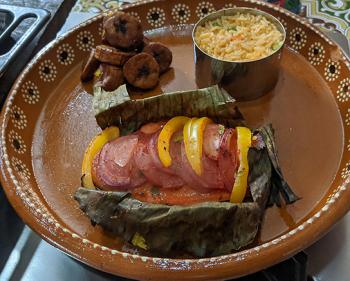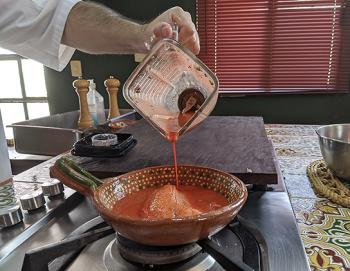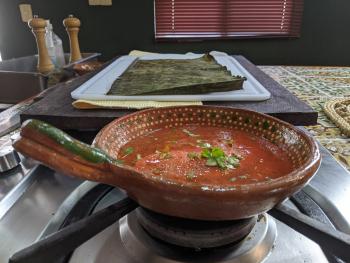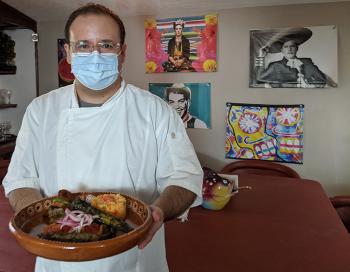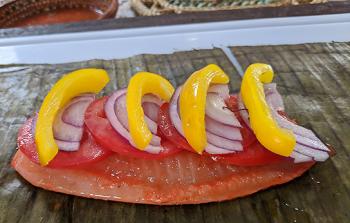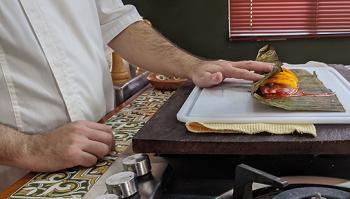What’s Cooking in… Cancún
This item appears on page 28 of the March 2021 issue.
In December 2020, when I came to the realization that the United States was the least safe place, COVID-wise, I decided to take a trip. A little research led me to feel that Cancún, on the Yucatán Peninsula in southeastern Mexico, was doing a much better job of mitigating the spread of COVID, so I booked a visit to Cancún, staying at the InterContinental Presidente Cancún Resort (www.ihg.com).
Room rates varied but averaged about $190 per night. I stayed for two weeks, enjoying a free night obtained from my IHG credit card.
I was impressed. Everyone was wearing masks; there was hand sanitizer in many, many places; when a guest left the hotel, the room was cleaned and not occupied for another 72 hours, and articles like towels and silverware were sanitized and wrapped.
Before I left home, I reached out to a couple of cooking schools by email to see about a cooking demonstration. I followed up with the first to answer, Yum Cooking Workshop (Calle Tres Palos #10, Supermanzana 30, Cancún, México, CP, 77509; phone +52 9984 607 371, yumcancun@hotmail.com, www.yumcancun.com).
The usual class starts with a cup of Maya coffee and a taste of the traditional bread, called pan de pulque, followed by information about pre-Hispanic and Spanish-colonial cuisine and a sampling of some local fruits. Visitors then move to the tasting room, where the sommelier describes types of tequila and mescal and explains how to taste them. Participants then prepare and enjoy a 6-course authentic Maya meal that is paired with Mexican wines. The 5-hour cooking class cost $115.
However, I was only interested in one recipe, a traditional Maya recipe for Tikin Xic fish. When I shared that with Chef Andres Tejeida Vilches, he offered to show me (gratis) how to make it. I quickly accepted.
During his demonstration, Chef Andres used a local naranja agria (sour orange), which was very juicy. He said getting it may be difficult for many in the US, but adding one-half cup of lime juice to one cup of orange juice makes a perfect substitute.
He noted that one of the ingredients, achiote, comes in paste and liquid form, but the paste provides a better flavor.
For the banana leaf that the fish is wrapped in for cooking, he suggested passing it over the heat for a few seconds to soften it, as it can be brittle. If banana leaves are not easy to come by in your area, aluminum foil can be used.
Sandra Scott can be reached by email at sanscott@gmail.com.
Tikin Xic Fish
½ cup achiote paste
2 garlic cloves, thinly sliced
1 tsp dry oregano
1 cup orange juice
½ cup lime juice
1 lb grouper or snapper fillet
½ cup fresh cilantro, chopped
2 Roma tomatoes, sliced
1 bell pepper, julienned
½ red onion, sliced
1 banana leaf (remove spine, creating two pieces) or aluminum foil
Salt and pepper to taste
In a blender, add achiote paste, garlic, oregano, orange juice, lime juice and 1 teaspoon of salt to create a marinade. Blend for at least 1½ minutes so the paste is completely incorporated. Put fish in a bowl and pour the marinade over it. Add cilantro and marinate for at least 1 hour. Place the fish on half of a banana leaf. Top with the sliced tomatoes, bell peppers and red onions, then season with salt and pepper. Wrap the leaf around the fish and bake for 10 minutes at 350°F. Serve with rice and fried plantain.

